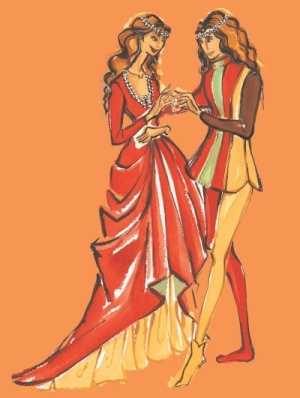 The engagement ring is one of life’s small-yet-powerful details that signify change, expectation and celebration. The engagement ring, when matched with the also-important wedding band, creates a shimmering reminder of love’s power, dedication and devotion. It’s the piece of jewelry that’s worn every day.
The engagement ring is one of life’s small-yet-powerful details that signify change, expectation and celebration. The engagement ring, when matched with the also-important wedding band, creates a shimmering reminder of love’s power, dedication and devotion. It’s the piece of jewelry that’s worn every day.
Regardless of how it may look displayed with other jewelry, the engagement ring remains constant on a woman’s hand. Even after the wedding, a woman gleefully will recall the story behind the ring and, perhaps more importantly, the relationship with her husband.
No better way is the story of the engagement ring told than in With This Ring: The Ultimate Guide to Wedding Jewelry by Penny Proddow and Marion Fasel (November 2004, Bulfinch Press). The authors know their stuff when it comes to wedding jewelry. Besides having written three other books on jewelry, Proddow and Fasel are contributing editors in the fine jewelry and watch department for InStyle magazine. Proddow and Fasel cover the history of the engagement ring, the high fashion styles today’s celebrities don’t mind showing off and key tips about when the time’s right to purchase the ever-important engagement ring.
“The history behind the engagement ring is absolutely fascinating,” Fasel said. “The engagement ring has become so romantic and so historical. When you follow the jewelry, you get the whole story.”
Through research for the book, Fasel discovered the striking similarity between the women proposed to and the attachment to their engagement rings. “This beautiful ring represents your love, commitment and devotion, there for the world to see,” Fasel said. “It makes people glow, and not just because of the beautiful jewel. It’s a new chapter in their lives that’s about to begin.”
The early origins of the engagement ring
Just like any bridal tradition, the engagement ring has a story all its own. It didn’t just start out displayed beautifully in a glass-enclosed counter at a fine jewelry store. Hardly. Dating back to Rome in the third century, as With This Ring explains, the traditional engagement ring often was designed as a key and was made from brass, bronze or iron. The idea was the ring unlocked a new life for the married woman. Some of these key rings even unlocked jewelry boxes with special treasures hidden deep inside.
In sixth-century England, a newly married woman not only received her key ring, but also a number of other valuables the couple would share, including keys to her new home that hung delicately around her waist. Even the wedding service incorporated the importance of the key ring in words spoken by the father of the bride at the ceremony: “I give thee my daughter to be thy honor and thy wife, to keep thy keys, and to share with thee in thy bed and goods.” Today, the key ring remains an option for some couples throughout Europe.
The introduction of gold and gems
Gems and gold, a combination that would set the precedent for engagement rings for hundreds of years to follow, made their entrance on the engagement ring circuit in the 15th century. More often, royal families joining together through marriage were first seen with these types of engagement rings. Much like today’s engagement rings, each stone enveloped a special meaning. The ruby stood for love; the emerald, home; and diamonds sparkled for fidelity and durability.
Around this same time, well-to-do brides often received special rings with hidden messages. Most popular, the gimmel engagement ring had two rectangular gems, traditionally a diamond and ruby for commitment and passion, respectively. Just below the stones, satyrs and nymphs were displayed in colored enamel; a metaphor, according to the authors, “for a playful courtship.” When a couple became engaged, the ring was evenly split into two parts. The secret? The ring contained a special opening on the band. She wore one half, he wore the other. Inside the rings, traditional sayings or verses were often inscribed. One of the more popular sayings resulted from the wedding ceremony: “What God has joined together, let no man put asunder.”
Fast-forward a few hundreds years. Welcome to the 18th century, where the Irish claddagh ring rang supreme. Worn today by jewelry aficionados of all cultures, the claddagh ring features two hands holding a heart adorned with a crown. The ring was often used as an engagement ring in Claddagh, a small fishing village off the western coast of Galway in Ireland. While the ring is associated with the village, the design actually originated a century earlier in Italy. Alternating letters of the couple’s first names were engraved inside the ring.
Hello, diamonds!
Eighteenth-century Europe is where the diamond engagement ring took center stage. A steady supply of diamonds discovered in Brazil made a diamond engagement ring more accessible for the upper classes. These rings often were found in silver and gold, beautifully displaying a center stone and two side stones. It also was at this time that a second ring—known today as the wedding band—was joined with the engagement ring at the time of the ceremony. Queen Charlotte, wife of George III of England, opted to nestle a diamond band with her engagement ring.
In 1886, the Tiffany setting took the engagement ring by storm. The setting allowed the stone to suspend high above the band, allowing greater amounts of light to pass through the stone. This, in turn, created an illumination atop the hands of married (and soon-to-be married) women across much of the world. The design’s creator, Charles Lewis Tiffany, knew the importance of a diamond engagement ring and wished for a stage to display its prominence and symbolism of love.
The engagement ring that’s yours alone
But enough about the history of engagement rings. Now, it’s about you. You’re on the cusp of getting engaged. You’ve dreamed and sketched ideas in your head for years. You know what you want, and you’re ready to get it. But before you rush off to see your fine jewelry sales associate, take the advice of Proddow and Fasel in With This Ring: The Ultimate Guide to Wedding Jewelry.
For starters, the authors say, know the terminology surrounding engagement rings. Coming to the store armed with information will help you get what you want when it’s time to buy. Stones, for example, are set a number of ways: bezel, channel, pave and micro pave, to name a few. If you find a picture of your perfect ring, do your homework. Be able to easily identify the parts of the ring before you start shopping.
A ring’s metal is just as important as the stone it’s displaying. Engagement rings use two types of metals: gold and platinum. Gold can be purchased in colors such as yellow, white and pink. Looking for a warm design that glows? Opt for yellow or pink gold. If shimmer and ice are what you’re after, consider white gold or platinum.
Of course, jewelry admirers would rather discuss the stone, the part of the engagement ring that, for the most part, takes center stage and catches the eye. Stones come in a number of cuts. Each cut provides the stone a different look, character and sparkle. The round brilliant stone maximizes natural light with its 58 facets. It’s a classic design that has been popular for years. The emerald cut, by comparison, clearly displays the stone’s clarity. Consider an emerald-cut stone as a perfectly formed ice cube. Any inclusions or imperfections surely will be seen by the naked eye.
If an antique style is more your cup of tea, consider the Asscher cut, designed in 1902. It’s a stone with a high crown, a small table, large step cuts and a deep pavilion. It’s a lengthy stream of words to describe a stone that, quite simply, melds antiquity and contemporary with great ease.
Whatever the style of engagement ring you receive, know that it’s uniquely your own. The longer you wear it, the stronger the ties you’ll have to this memento, which represents so much history and years of happiness and love yet to come.
–Wendy Townley






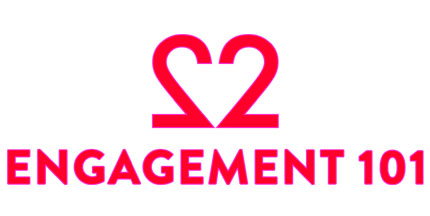




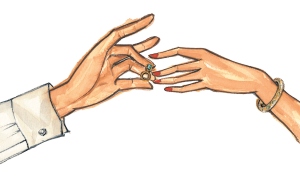

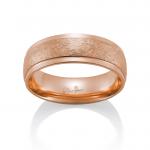
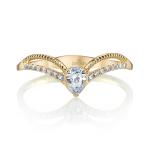
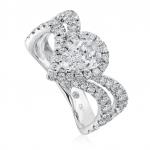
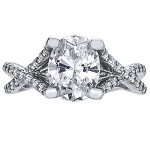
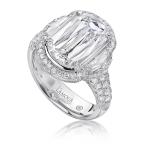
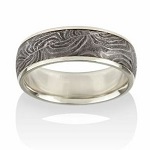
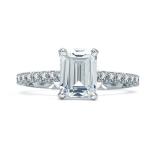
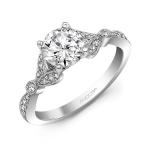
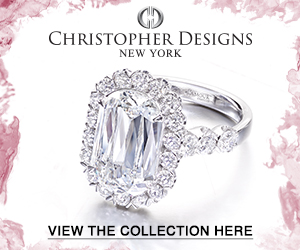
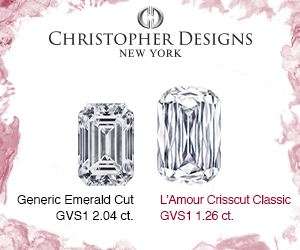
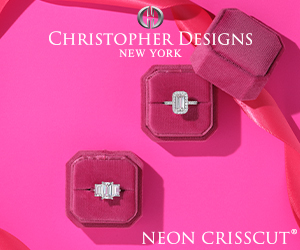
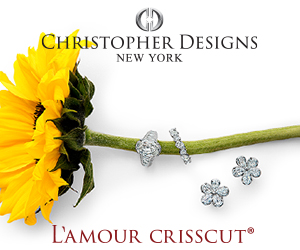
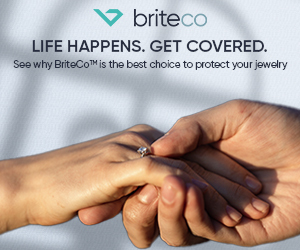
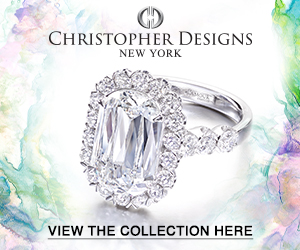
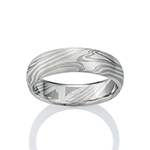
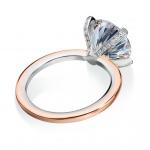
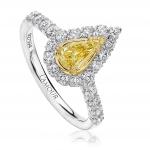
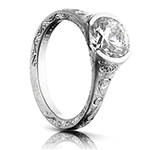
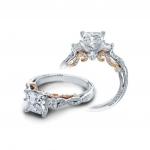
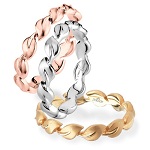
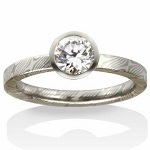
A very interesting and fun article!